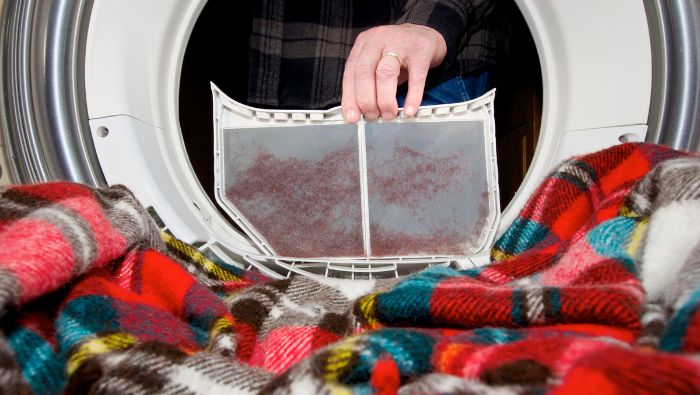9 Creative Ways To Repurpose Dryer Lint
by Rose Scott

Dryer lint might be one of the last things you’ve thought about repurposing, but we’ve found several ways people put their dryer lint to use.
Dryer lint is nothing more than the tiny fibers and dust particles that collect in the lint trap of your clothes dryer, and it can cause your dryer to work less efficiently if not cleaned out regularly.
If you do a lot of laundry, you likely clean a lot of lint out of your lint trap each week and toss it in the trash. Have you ever wondered how to repurpose it? Below are nine creative ways to repurpose dryer lint that we found online.
Creative Ways To Repurpose Dryer Lint
Some of these ideas might not work for you, but you may find one or two surprisingly useful.
1. Fire Starters
Dryer lint makes excellent tinder for starting fires. You can stuff it into a cardboard toilet paper roll or mix it with wax to make a fire starter.
2. Craft Projects
You can use lint as stuffing for homemade toys or small pillows or mix it with glue to create paper-mâché.
Sign Up for Savings
Subscribe to get money-saving content by email that can help you stretch your dollars further.
Twice each week, you'll receive articles and tips that can help you free up and keep more of your hard-earned money, even on the tightest of budgets.
We respect your privacy. Unsubscribe at any time.
3. Clay Substitute
Mixing lint with flour, water and a bit of glue can create a clay-like substance for sculpting or making homemade ornaments.
4. Temporary Insulation
Use dryer lint as a lightweight, temporary insulation material for small gaps and cracks in your home.
5. Pet Bedding
If you have small pets like hamsters or gerbils, you can use lint as a soft, comfortable bedding material.
Related: 21 Low Cost DIY Pet Products
6. Muffling Material
Lint can help muffle noise. Place it inside a musical instrument case or around noisy appliances.
7. Cleaning
Lint can be used as a disposable cloth for cleaning, such as dusting or wiping up spills. Save even more by making your own cleaners.
8. Potted Plants
Some gardeners use lint to help retain moisture in potted plants. Place a layer at the bottom of the pot before adding soil.
9. Compost Material
Add lint from natural fibers to your compost pile as a source of carbon-rich material.
Editor’s note: Lint from synthetic fibers may not be suitable for all uses, especially when composting. Also, be cautious when using lint near open flames or heat sources, as it can be highly flammable.
Reviewed March 2023
Popular Articles
- 7 Habits of Highly Frugal People
- 5 Simple Budget Cuts That Can Save $200 a Month
- How to Track Down Unclaimed Funds Owed You
- 32 Ways to Save Money on Your Utility Bills
- Do You Need Credit Life Insurance When Buying a New Car?
- How to Maximize Profits When Selling Online
- Staying Motivated to Continue Digging Yourself Out of Debt

On After50Finances.com
- 9 Things You Need to Do Before You Retire
- You Didn’t Save Enough for Retirement and You’re 55+
- When Empty Nesters Reorganize and Declutter Their Home
- Reinventing Your Career in Your 50s or 60s
- What Mature Homeowners Should Know about Reverse Mortgages
- 2 Reasons to Collect Social Security Benefits As Soon As Possible

